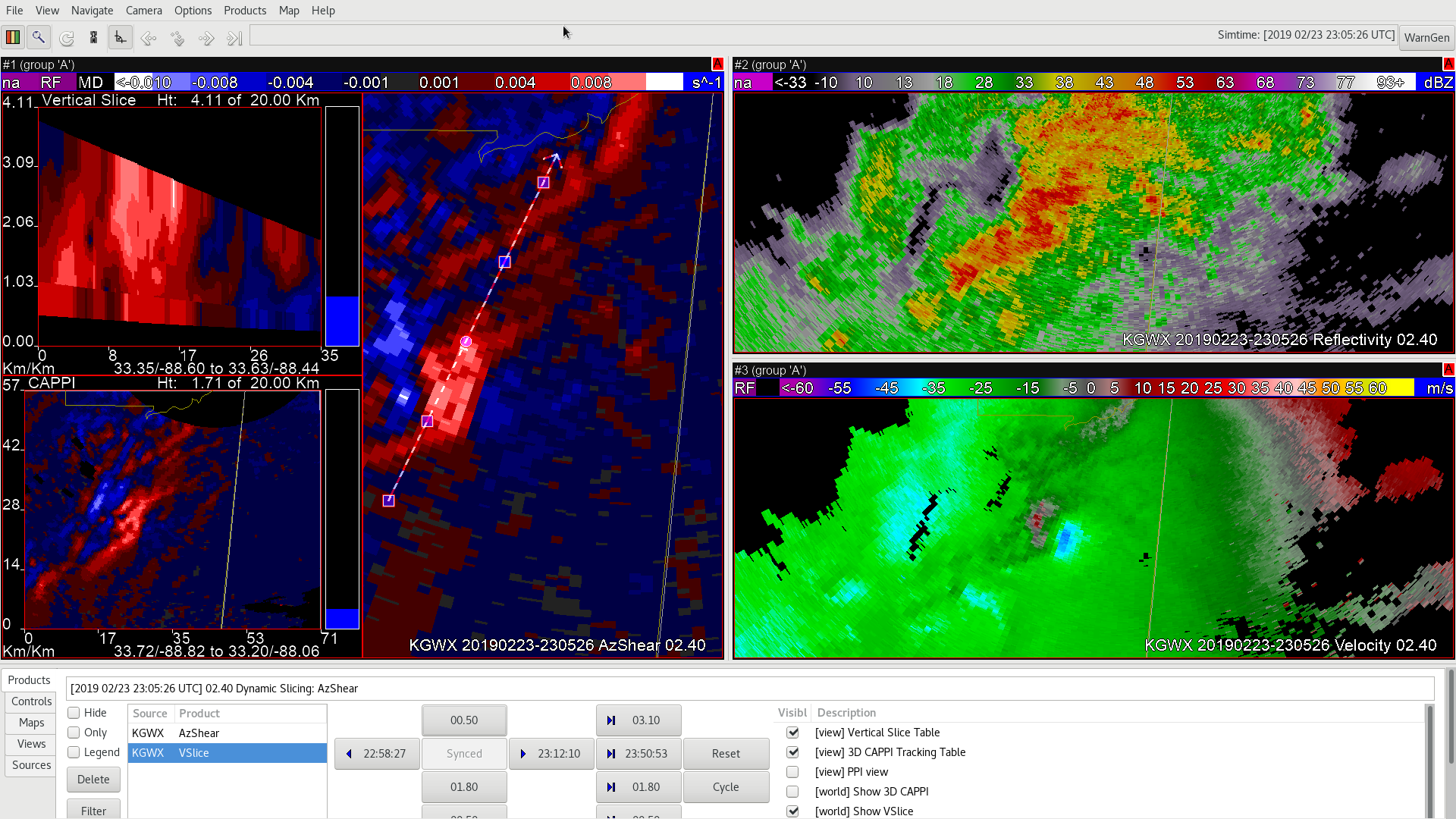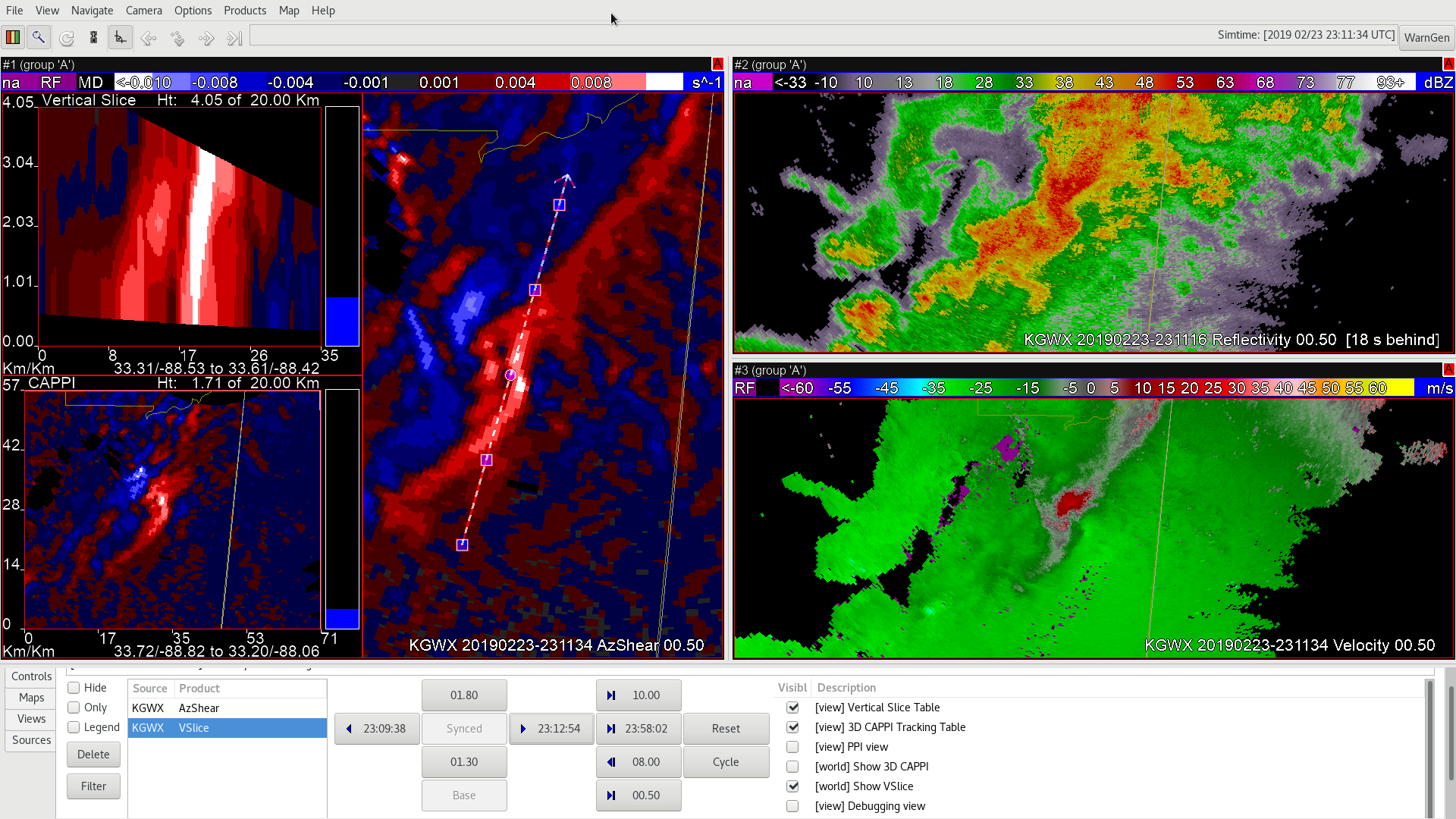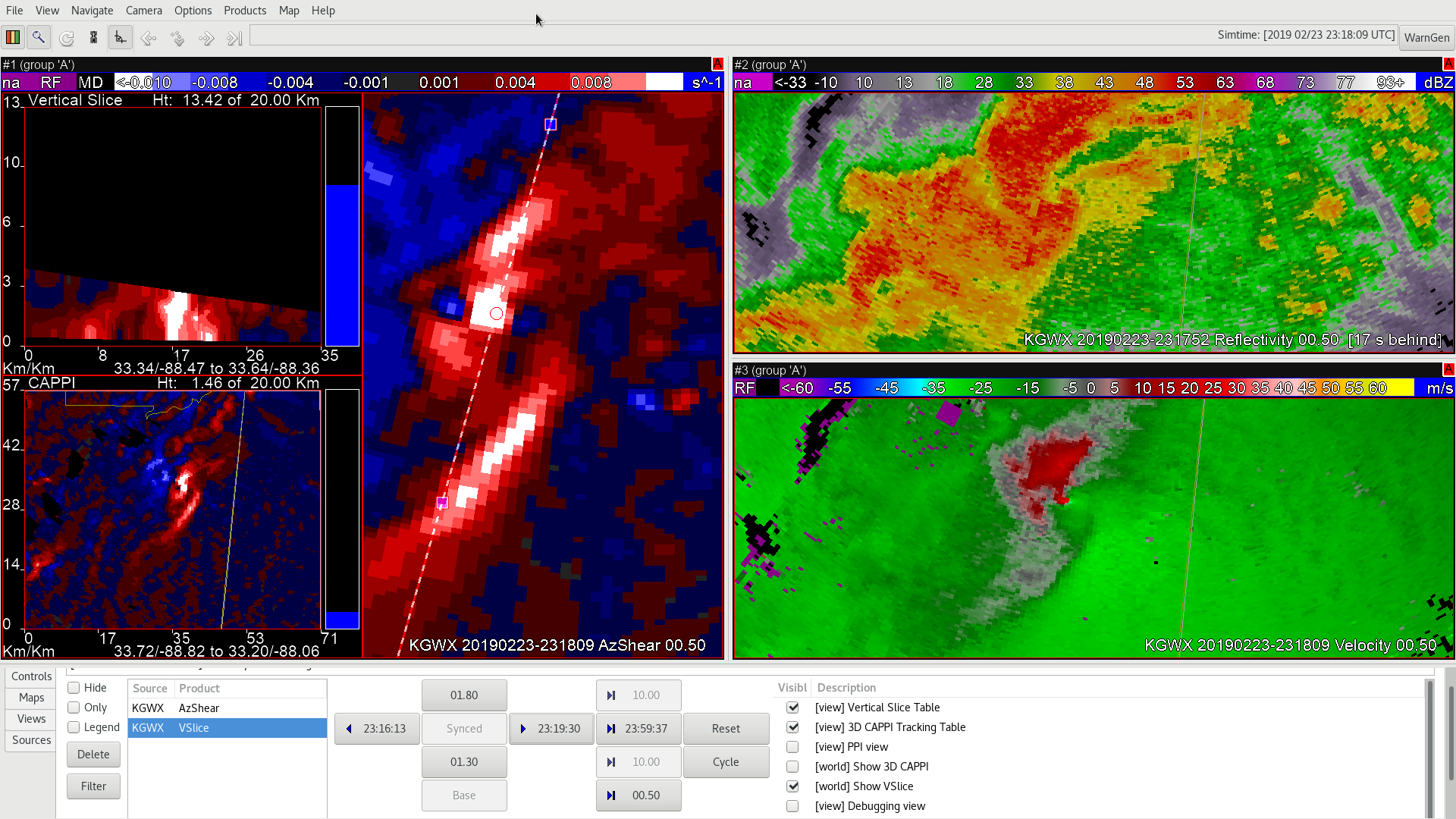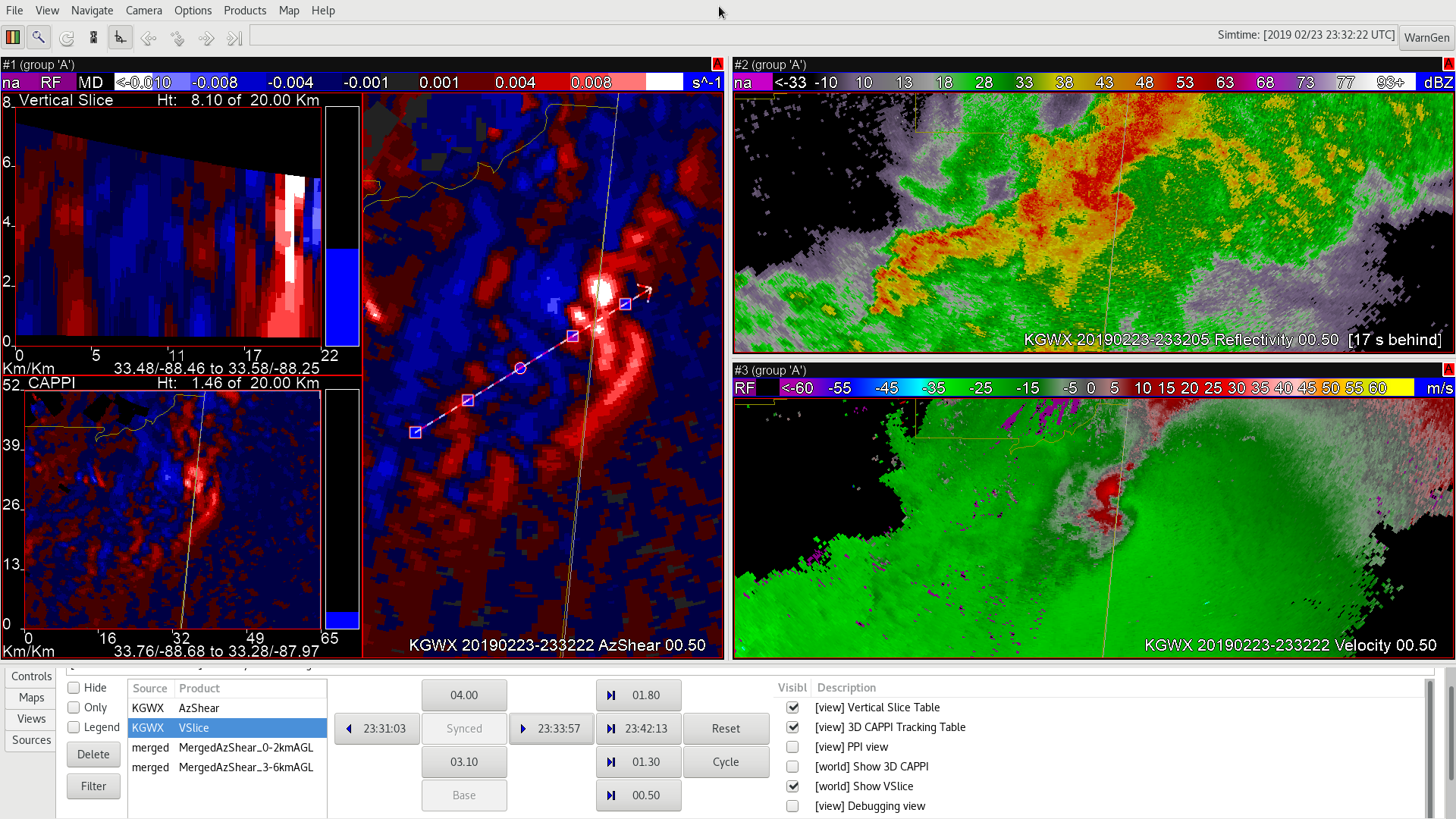AzShear has the potential to allow for sampling of the depth of rotation in any given storm in time and space to track the evolution of mesocyclones with time. Before the surface circulation had developed, AzShear was starting to pick up on a strengthening mesocylone at approximately 3km. Surface velocity products show weak cyclonic convergence starting to develop indicating that the potential was increasing for tornadogenesis sometime soon. So, what did the time height look like?

At 23:05:28, the strongest indications in AzShear were at the 2.4 degree tilt in this scan but were rather weak heading down to the lowest tilt (and there is an artifact in the cross section due to a time-matching issue with the SAILS scan). Not shown is the descending positive AzShear values at or above 0.010 s^-1 with time so that by 23:11:34, the cyclonic shear had now reached the lowest scan:

However, the lowest tilt shows that the tornado was possibly still in the process of forming as there was not a strong gate-to-gate couplet yet. That took another 5 to 7 minutes depending on how strong of a couplet you want. For this case, we’ll use 23:18:09:
While the strong TVS remained intact, AzShear showed high positive values from the top of the cone of silence down to the lowest tilt. Once the surface TVS and vortex appeared to have broken down, the mesocyclone aloft was still strong as shown in AzShear at 23:32:22:

This indicates that there is utility in using AzShear in keeping situational awareness of what storms that are rotating are doing with time. However, the usual caveats apply and YMMV:
- Visualizing the 3-D structure using cross-sections will depend on how you place your cross section and how fast the storm is moving with time. It may be impossible to do 2-D cross sections in 3-D space if the storm is moving fast!
- Since AWIPS doesn’t have 3-D rendering, the ability to accurately “paint” vertical circulations to see overall development is non-existent.
- SAILS scans in WDSS-II (and potentially FSI) will not line up with the full Volume Scan so tracking of deep features will be limited at times, also complicating matters.
-Dusty
